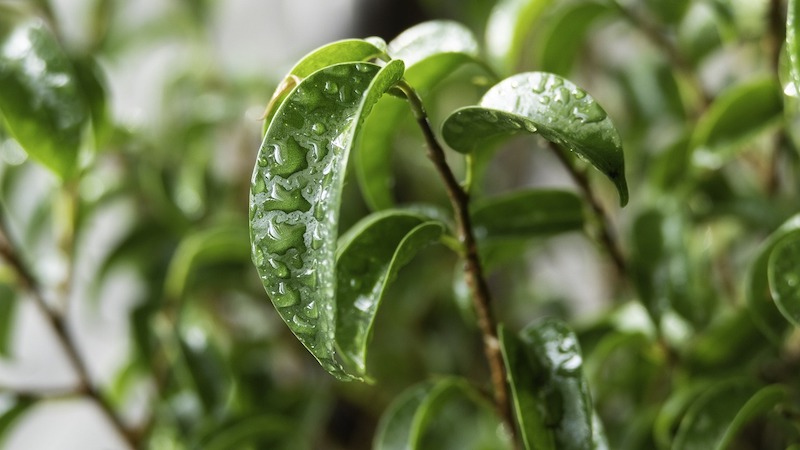What do the banyan tree, climbing fig, fiddle-leaf fig, and rubber tree all have in common? They are all members of Ficus, a large and diverse plant genus, native to India and Southeast Asia. While many ficus species hail from tropical rainforests, others have adapted to living in tropical dry forests. They are well adapted to living in high humidity and high moisture, sometimes followed by drier periods. They prefer quickly draining soil, warm temperatures, filtered sunlight, and nutrient-deficient soil.

To maintain the brilliant foliage color, grow ficus in temperatures between 70 to 75 degrees with humidity levels of 40 percent or higher. Ficus prefers deep waterings when the top couple of inches are dry to the touch. Paying close attention to ficus’s water needs will prevent most problems with this houseplant.
How To Tell If Ficus Needs Water
Insufficient watering can cause ficus problems. Symptoms of too little water include yellowing, drooping, wilted leaves and stunted growth. When you spot these signs, check the soil. If the top two or so inches are dry, then water. Typically, it’s necessary to water this houseplant once a week. Also, try to maintain the humidity at 40% or higher. Mist ficus’s leaves frequently.
This tropical perennial is susceptible to fungal diseases, including powdery mildew and root rot. Too much water can also lead to yellow, brown, or wilting leaves and mushy, dark-colored stems, leaves, and roots. If ficus gives you these signals, stop watering until the top layer of soil dries out.

How To Water Ficus
Water ficus in the morning when the top two inches of soil are dry. If possible, use rainwater or lukewarm distilled water versus tap water. When watering, water deeply until you can see liquid flowing out the drainage holes. Top watering like this removes soil salts. As an alternative, you can bottom water by sitting the pot in a few inches of water and allowing the soil to wick up the moisture until it’s saturated. Either mist or use a humidifier to maintain indoor humidity at 40% and above. Doing so will minimize moisture loss due to transpiration.
Ficus Watering Tips
- Humidity of 40% and above supports moisture retention.
- If the top 2 inches of soil are dry to the touch, water deeply.
- Dehydration symptoms include yellowing, drooping, wilted leaves and stunted growth.
- Yellow, brown, wilting leaves and mushy, dark-colored stems and leaves mean ficus has been overwatered.
